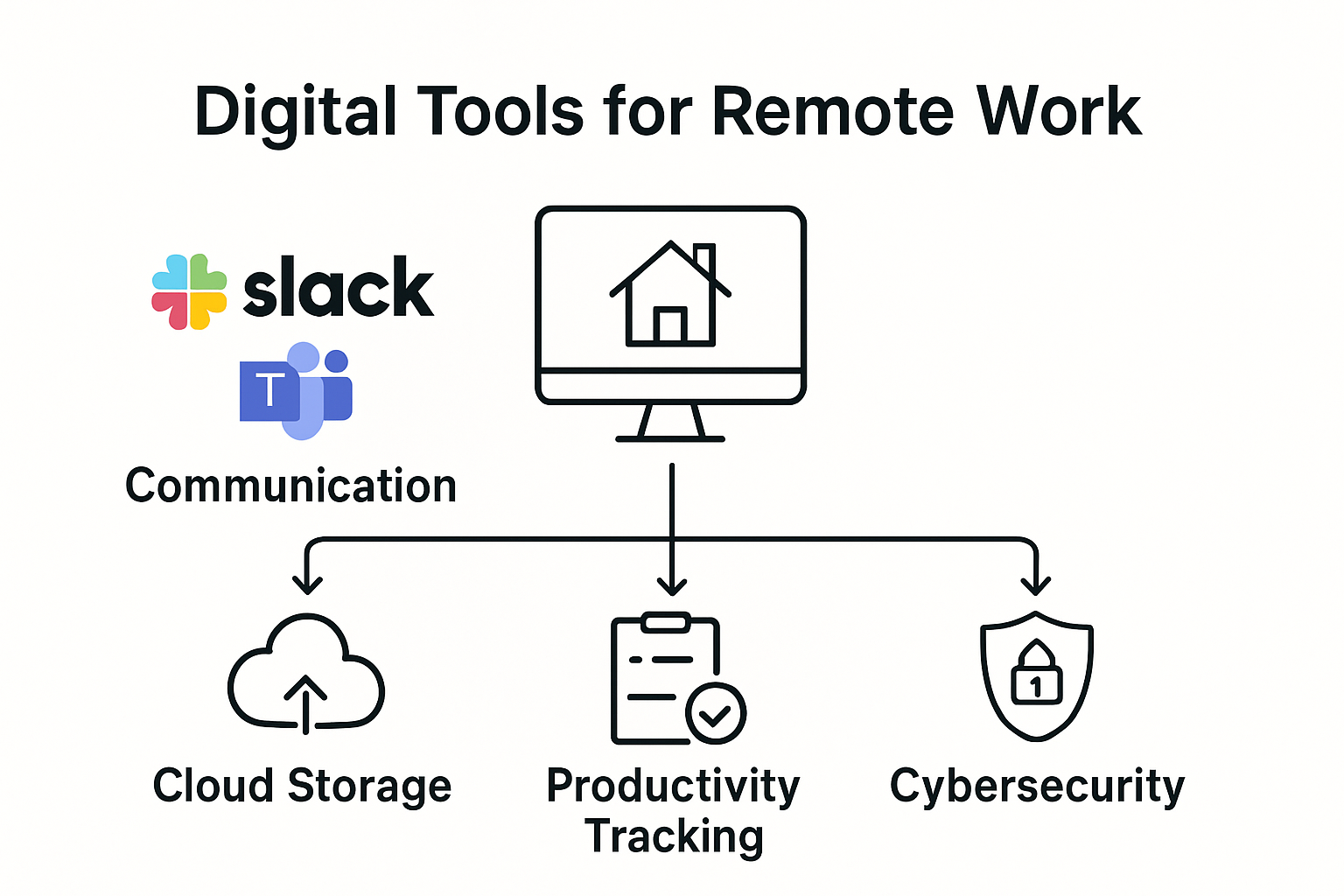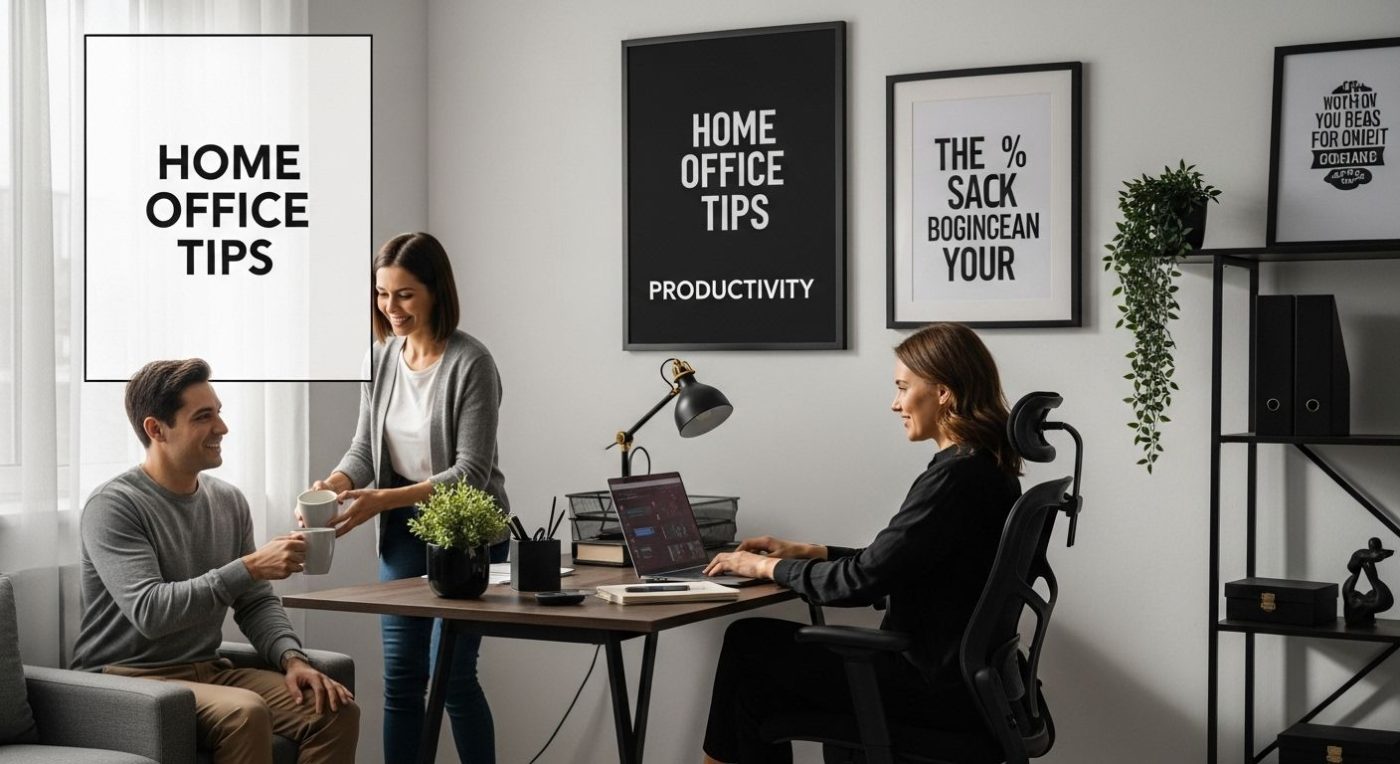Marijuana
Understanding Home Office Tips for Better Productivity
Working from home sounds like a dream for many and the right setup can make all the difference.
Surprisingly, Stanford research found that remote workers can be 13 percent more productive when their home office environment is thoughtfully designed. Most people fuss over fancy gear or location but it turns out that simple changes to your layout and daily routine have a much bigger impact than you might expect.
Table of Contents
- What Are Home Office Tips And Why They Matter
- The Impact Of A Productive Workspace On Work-Life Balance
- Key Elements Of An Effective Home Office Setup
- How To Maintain Motivation And Focus At Home
- Understanding The Role Of Technology In Home Office Efficiency
Quick Summary
| Takeaway | Explanation |
|---|---|
| Design ergonomic workspaces for comfort | Prioritize adjustable furnishings and equipment to prevent strain and ensure a conducive work environment. |
| Set clear boundaries between work and personal life | Create physical separators and routines to help transition between professional and personal time effectively. |
| Leverage technology to boost productivity | Utilize high-speed internet and collaborative tools to create a seamless and efficient working environment. |
| Establish structured daily routines | Develop consistent work schedules and task management strategies to enhance focus and motivation. |
| Focus on psychological readiness in workspace design | Intentional workspace arrangements can enhance mental clarity and support professional identity and performance. |
What Are Home Office Tips and Why They Matter
Home office tips are strategic approaches and practical recommendations designed to optimize work performance, comfort, and efficiency when working from a home environment. These guidelines help professionals transform their home workspace into a productive sanctuary that supports both professional output and personal well-being.
Understanding the Home Office Ecosystem
A home office is more than just a physical space where work happens. It represents a carefully curated ecosystem that integrates personal comfort, technological infrastructure, and psychological readiness. Research from Stanford University reveals that remote workers can be 13% more productive when their home office environment is strategically designed.
Key components of an effective home office ecosystem include:
- Ergonomic workspace design
- Reliable technological infrastructure
- Clear boundaries between work and personal life
- Personal comfort and mental health considerations
The Psychological Impact of Home Office Design
The physical layout and arrangement of a home office significantly influence psychological states and work performance. Proper workspace configuration can reduce stress, enhance focus, and create a sense of professional identity even within a personal environment.
Psychological research demonstrates that intentional workspace design triggers cognitive signals that help transition from home mode to work mode. This means that simple elements like dedicated work areas, proper lighting, and organized surroundings can dramatically improve mental clarity and professional performance.
By understanding and implementing strategic home office tips, professionals can create environments that not only support their work objectives but also nurture their overall well-being and professional growth.
The Impact of a Productive Workspace on Work-Life Balance
A productive workspace plays a critical role in establishing and maintaining a healthy work-life balance, serving as a psychological and physical boundary between professional responsibilities and personal time. Understanding this relationship helps professionals create environments that promote efficiency, mental well-being, and sustainable performance.
The Psychological Boundaries of Workspace Design
Workspace design extends far beyond physical arrangements. Research from the National Institute of Mental Health indicates that intentional workspace configuration can significantly reduce stress and prevent professional burnout. The workspace becomes a mental trigger that helps professionals transition between work and personal modes.
Key psychological boundaries include:
- Clear physical separation between work and living areas
- Visual cues that signal professional mindset
- Deliberate transitions in and out of work mode
- Minimizing potential distractions
Holistic Impact on Professional Performance
Work-life balance is not about equal time allocation, but about creating meaningful integration between professional responsibilities and personal well-being. A thoughtfully designed workspace acts as a psychological buffer, helping individuals maintain mental clarity and emotional resilience.
By establishing clear spatial and temporal boundaries, professionals can prevent work from encroaching on personal time. This approach reduces chronic stress, enhances overall job satisfaction, and promotes a more sustainable approach to professional development.

The workspace becomes a strategic tool for managing mental energy, allowing individuals to be more present and engaged both during work hours and personal time.
Ultimately, a productive workspace is an investment in personal and professional growth, enabling individuals to achieve higher performance while maintaining emotional and psychological equilibrium.
Key Elements of an Effective Home Office Setup
Creating an effective home office setup involves more than simply placing a desk and chair in a corner. It requires a strategic approach that integrates ergonomics, technology, and personal comfort to support optimal work performance and well-being.
Ergonomic Foundation for Workspace Design
Research from the Occupational Safety and Health Administration highlights that proper ergonomic design is crucial for preventing physical strain and maintaining long-term health. The human body is not designed for prolonged sedentary work, making intentional workspace configuration essential for preventing potential health issues.
Critical ergonomic elements include:
- Adjustable chair with proper lumbar support
- Desk at appropriate height for comfortable typing
- Monitor positioned at eye level to reduce neck strain
- Adequate keyboard and mouse placement to prevent repetitive strain
Technology and Infrastructure Considerations
A robust technological infrastructure forms the backbone of an effective home office. Reliable internet connectivity and appropriate digital tools are as important as physical workspace design. This means investing in high-speed internet, noise-cancelling headphones, and equipment that supports seamless communication and productivity.
The right technological setup enables professionals to create a workspace that is not just functional, but also adaptable to varying work demands. Wireless peripherals, multiple monitor configurations, and cloud-based collaboration tools can transform a simple home workspace into a dynamic professional environment.
By thoughtfully integrating ergonomic design and technological infrastructure, professionals can create home offices that support physical health, mental well-being, and exceptional work performance.
To make it easier to understand the core features of a well-designed home office, the following table summarizes the key elements highlighted in the article and explains why each is important for productivity and well-being in a Canadian context.
| Key Element | Description | Productivity Impact |
|---|---|---|
| Ergonomic Workspace Design | Adjustable chair, proper lumbar support, desk at suitable height | Reduces strain, prevents injury, and maintains focus |
| Reliable Technological Setup | High-speed internet, robust digital tools, noise-cancelling headphones | Supports seamless work, communication, and adaptability |
| Clear Work-Life Boundaries | Physical and psychological separation between work and home | Enhances mental clarity and prevents burnout |
| Personal Comfort Considerations | Selection of lighting, ambient temperature, and personal touches | Promotes emotional well-being and sustained productivity |
| Organized Surfaces & Storage | Clutter-free environment, accessible storage solutions | Minimizes distractions and improves task concentration |
How to Maintain Motivation and Focus at Home
Maintaining motivation and focus while working from home requires a strategic approach that addresses psychological, environmental, and personal performance factors. Unlike traditional office settings, home environments present unique challenges that demand intentional management of mental resources and professional energy.
Psychological Foundations of Remote Work Motivation
Research from the University of California Berkeley reveals that motivation is not just about willpower, but about creating supportive internal and external conditions. Intrinsic motivation emerges from understanding personal purpose and establishing meaningful professional goals.
Key psychological strategies include:
- Connecting daily tasks to broader career objectives
- Establishing clear, achievable short-term goals
- Recognizing and celebrating incremental achievements
- Maintaining a growth mindset toward professional development
Creating Structured Productivity Environments
The home workspace directly influences mental performance and motivational levels. Professionals must design environments that minimize distractions and create psychological signals of professional engagement. This means developing consistent routines, managing digital interruptions, and creating physical boundaries that separate work from personal life.
Concentration is a skill that can be systematically developed through intentional practices like time blocking, periodic breaks, and mindful task management. By understanding personal energy rhythms and creating supportive structures, individuals can transform their home environments into powerful productivity zones.
Successful remote work motivation is about harmonizing personal psychology, environmental design, and strategic performance management to create sustainable professional momentum.
The table below compares the psychological and technological aspects of home office design discussed in the article, showing how each supports productivity and well-being for remote professionals.
| Aspect | Role in Home Office | Example from Article | Benefit |
|---|---|---|---|
| Psychological | Workspace triggers focus | Dedicated area, visual cues, clear boundaries | Boosts mental clarity, lowers stress |
| Technological | Enables efficient workflow | Fast internet, cloud tools, advanced communication software | Improves collaboration, reduces delays |
| Psychological | Motivates and maintains energy | Celebrating achievements, growth mindset, short-term goals | Sustains engagement and motivation |
| Technological | Structures tasks and routines | Productivity tracking tools, digital calendars | Organizes tasks, ensures consistency |
Understanding the Role of Technology in Home Office Efficiency
Technology has transformed home offices from simple workspaces into sophisticated productivity ecosystems. Modern digital tools not only facilitate work completion but also create integrated environments that enhance communication, collaboration, and professional performance.
Digital Infrastructure as Performance Enabler
Research from MIT’s Sloan School of Management demonstrates that strategic technological integration directly correlates with workplace efficiency. Technology is no longer just a support mechanism but a fundamental component of professional productivity.
Critical technological components include:
- High-speed internet connectivity
- Cloud-based collaboration platforms
- Cybersecurity protection systems
- Advanced communication software
- Productivity tracking and management tools
Psychological Impact of Technological Integration
Beyond practical functionality, technology plays a profound psychological role in home office environments. Digital tools provide structure, reduce cognitive load, and create seamless transitions between different work tasks. Effective technological integration mimics traditional office workflows, helping professionals maintain professional momentum and psychological engagement.
The right technological ecosystem transforms potential home office limitations into opportunities for enhanced flexibility, improved communication, and personalized workflow management. By selecting tools that align with individual work styles and professional requirements, individuals can create dynamic, responsive work environments that transcend physical workspace constraints.

Ultimately, technology in home offices represents more than hardware and software. It is a strategic approach to reimagining work, connecting professionals globally while providing personalized, efficient work experiences.
Unlock Next-Level Focus at Home With GreenSociety
If you have mastered ergonomic design and reliable technology in your quest for a highly productive home office, you may still find yourself battling distractions or wavering motivation. As highlighted in “Understanding Home Office Tips for Better Productivity,” stress and mental fatigue often linger despite your efforts to create an ideal workspace. In times like these, finding new strategies to maintain your energy and clarity can make all the difference between a good day and a truly great one.

Discover how thoughtfully chosen cannabis and CBD products from GreenSociety.cc can become a valuable part of your home office routine. Explore our range of edibles, concentrates, vapes, and accessories crafted for both relaxation and focus. With quick, discreet shipping across Canada and detailed educational resources, now is the perfect time to elevate your well-being and productivity. Visit GreenSociety.cc to find the right support and experience what a balanced, inspired work-from-home day can feel like.
Frequently Asked Questions
What are some effective home office tips for enhancing productivity?
Effective home office tips include creating an ergonomic workspace, establishing clear boundaries between work and personal life, utilizing technology effectively, and implementing structured routines to minimize distractions.
How can ergonomic design improve my home office productivity?
Ergonomic design improves productivity by reducing physical discomfort, preventing strain, and enhancing focus. Proper chair and desk heights, monitor positioning, and keyboard placement contribute to a healthier working environment.
What role does technology play in a productive home office?
Technology plays a crucial role by enabling efficient communication, collaboration, and workload management. Tools like high-speed internet, cloud-based platforms, and productivity software facilitate smooth workflows and enhance overall performance.
How can I maintain motivation when working from home?
To maintain motivation at home, connect daily tasks to broader career goals, establish clear short-term objectives, recognize achievements, and create structured work environments that limit distractions.














